Last Updated: 4 months ago
Have you ever wondered about dental care for cats?
A few decades ago, you’d be considered crazy if you were worried about your cat’s teeth.
However, today, we know that our furbabies need dental care as well as pet insurance.
So, read below to find step-by-step instructions on how to care for your cat’s teeth.
Dental Care for Cats: 6 Important Tips
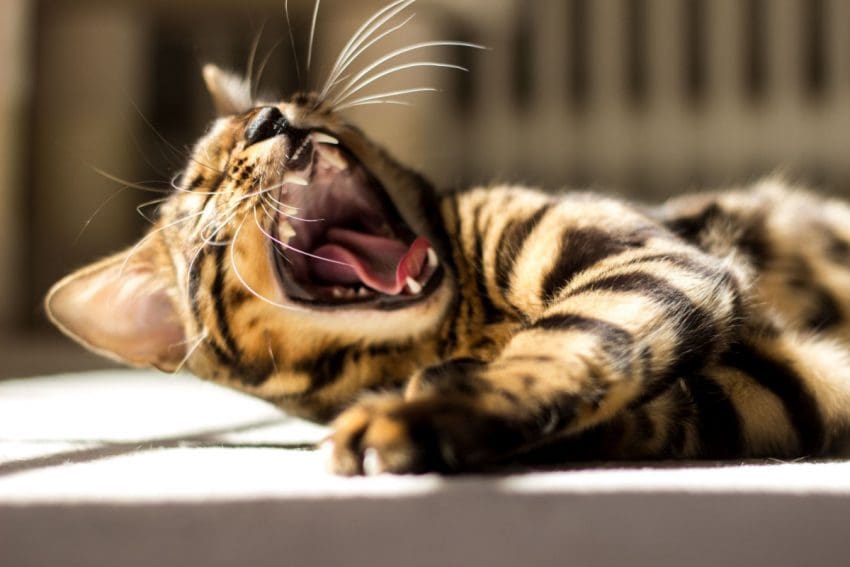
Cats have 30 adult teeth, and unlike humans, they can’t go to the dentist when a tooth is hurting.
Instead, they learn to live with the pain. So you might never notice that something is wrong.
In the wild, cats chew on bones and grass to clean their teeth. You can use cat teeth cleaning wipes to help too.
But they don’t have that opportunity when they live inside. That’s why you have to step in and help them keep their teeth clean.
1. Learn the signs of dental disease
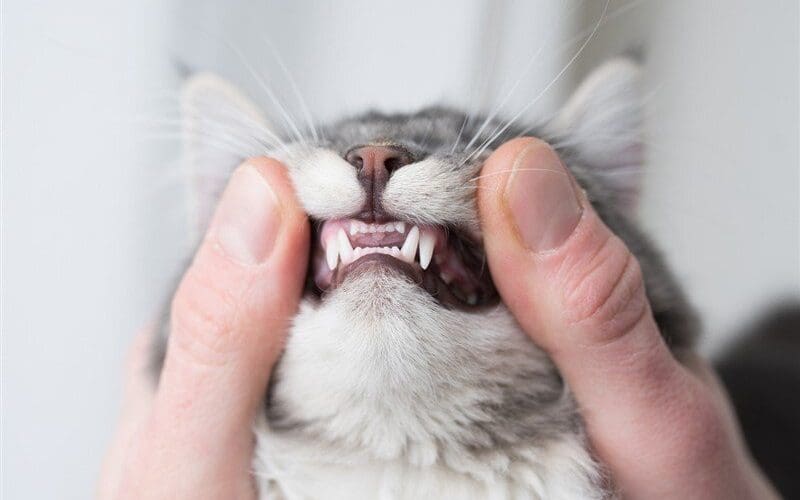
Much like humans, cats have plaque. That’s the sticky film that builds up on the teeth.
The plaque is made of bacteria and food particles. When it remains, it eventually turns into tartar and leads to periodontal disease.
The usual signs of dental disease in cats are:
- Bad breath. Cats usually have a mouth that smells fishy, but a cat that stinks horribly is worrisome.
- Excessive drooling
- Pawing at the mouth
- Refusal to eat even though the cat looks hungry.
- Inflamed or bleeding gums. A cat’s gums should be pink in color.
If you suspect that your cat has a toothache, you should take her to the vet immediately for evaluation.
Untreated dental problems lead to abscesses or tooth loss.
2. Purchase supplies
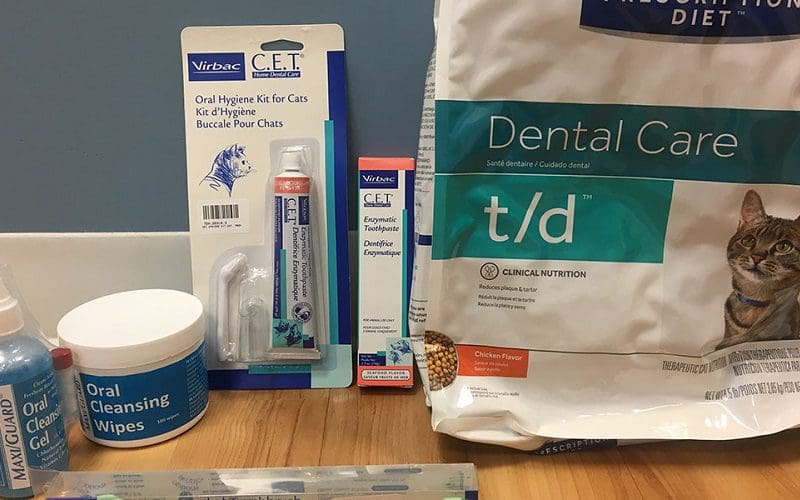
Go and buy a pet dental kit. It includes everything you need to brush a cat’s teeth: a proper cat toothbrush and pet-safe toothpaste.
Don’t use human toothbrushes. They are too big to fit in the cat’s mouth and too harsh for their gums.
In addition to this, don’t ever use human toothpaste when cleaning your cat’s teeth.
Fluoride is toxic for cats, and you might poison your pet if you brush Sissy’s teeth with human paste.
3. Get the cat used to the toothbrush and toothpaste
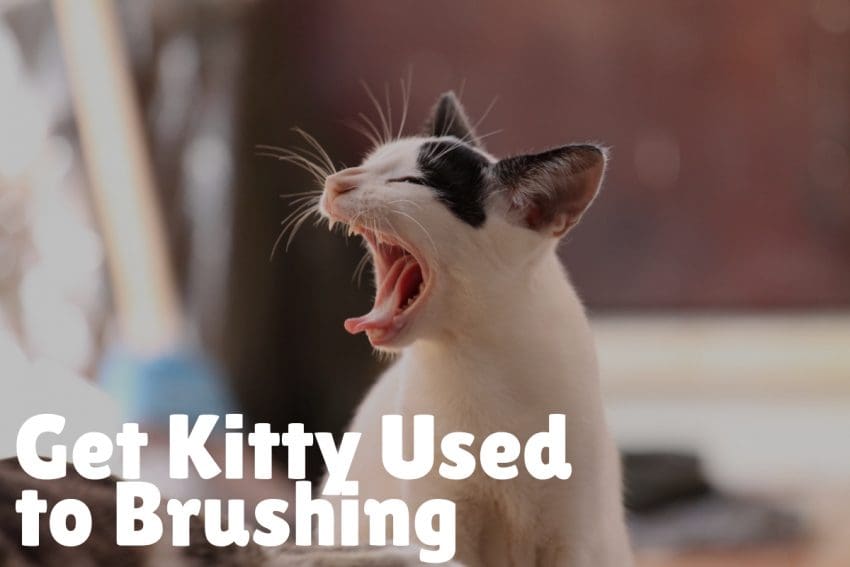
Before you attempt to brush your cat’s teeth, it’s a good idea to make her comfortable with the smell of the toothpaste and the sight of the toothbrush.
Otherwise, Sissy will freak out and scratch you to death. Let your cat smell the toothbrush and allow Sissy to interact with it.
Sissy will probably rub her cheeks and gums on it to mark it as “hers,” or she might bite it and carry it around.
To acclimate your cat to the toothpaste, squeeze some on your finger, let her smell it, and lick it off.
The next day, put some paste on your finger and run it gently over her gums. If she doesn’t seem to mind it, you’re ready to go.
Remember to reward your cat with treats when she reacts well in the presence of the toothbrush and paste.
4. Brush your cat’s teeth
It’s not as scary as it sounds. And the whole procedure won’t take you more than a few minutes.
So, here’s how to brush your cat’s teeth properly:
- Prepare the toothbrush with the paste
- Get the cat’s attention when she is relaxed.
- Put her on a comfortable surface.
- If Sissy is likely to struggle, wrap her in a towel.
- Open the cat’s mouth.
- Gently brush the teeth using circular motions.
- Massage the gums carefully.
- Let the cat go.
- Reward her with a treat.
- Depending on how well your cat likes brushing, you can do it daily or once a week.
While you’re brushing your cat’s teeth, you should also check for bleeding gums, loose teeth or sores.
5. Think outside the box

I know what some of you are thinking. There is no way I could brush my cat’s teeth with my fingers still attached to my hand.
Unfortunately, even the mellowest cat might turn into a beast when it comes to dental care.
I don’t recommend that you continue your attempts with teeth brushing if the cat gets too stressed or agitated by the experience.
Instead, some alternatives exist that you can try to keep your cat’s teeth healthy:
- Look for special cat food labeled “dental care.” This type of food is rougher, so it could remove the plaque. However, it won’t work if the plaque has already turned into tartar.
- Ask your vet about dental sprays. They are added to the water to reduce the amount of bacteria in the mouth.
- Get suitable chew toys.
- Ask your vet about suitable raw bones or dental chews for cats.
- Consider getting your cat to the vet for a professional cleaning.
6. Have yearly check-ups

Tooth decay and gum disease are related to kidney failure and heart problems. So, don’t wait until the problem has escalated.
Schedule yearly check-ups with your vet to make sure that your cat’s teeth are healthy.
Professional dental cleaning to remove tartar is done under anesthesia. It’s stressful for the cat’s organism, so you’d want to do it as little as possible.
Wrap-Up
Dental care is essential for any cat if you want it to have a long and healthy life.
Kittens are easier to teach than cats, so you’ll want to introduce your little one to the concept of teeth brushing as soon as possible.
What do you think about dental care for cats? Do you brush your cat’s teeth? Tell us in the comments.
Resources:
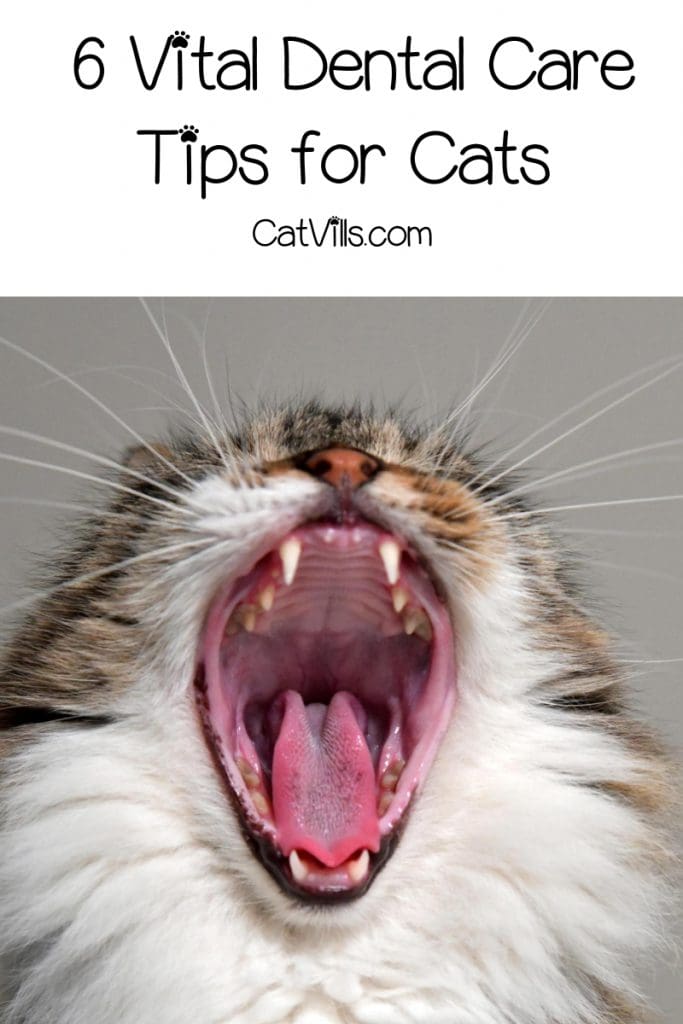

Olfa knows how to get things done and has a keen business sense that others admire. She’s always on the go, coming up with new ideas! Her ability to anticipate the needs of her readers and deliver information that they want is what makes CatVills such a success. She loves cuddling her cat Picaciu. He is her inspiration.
